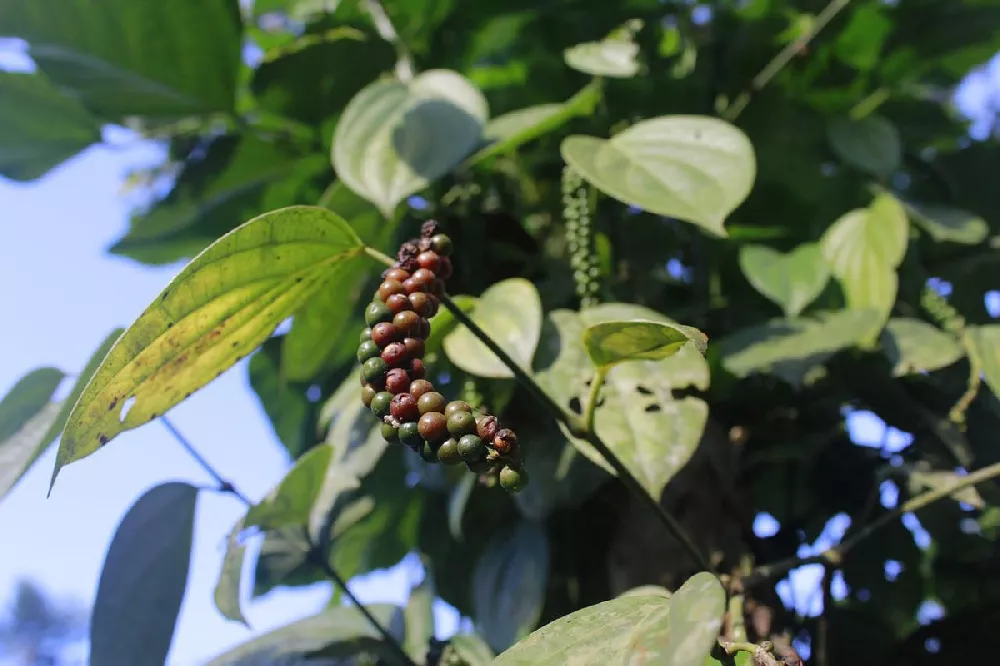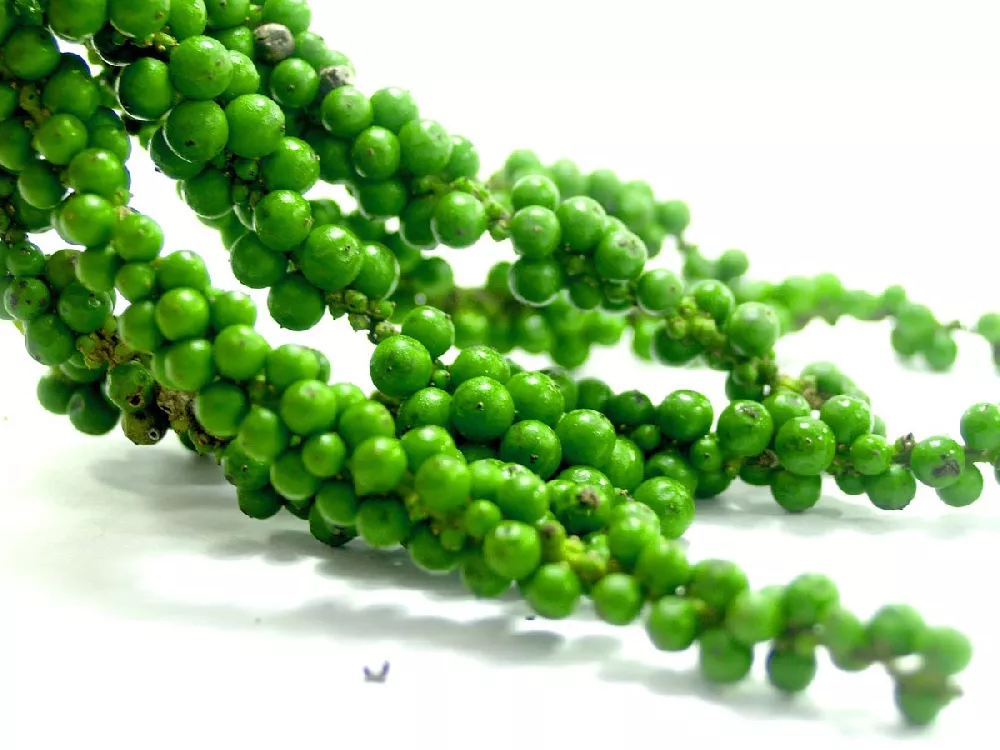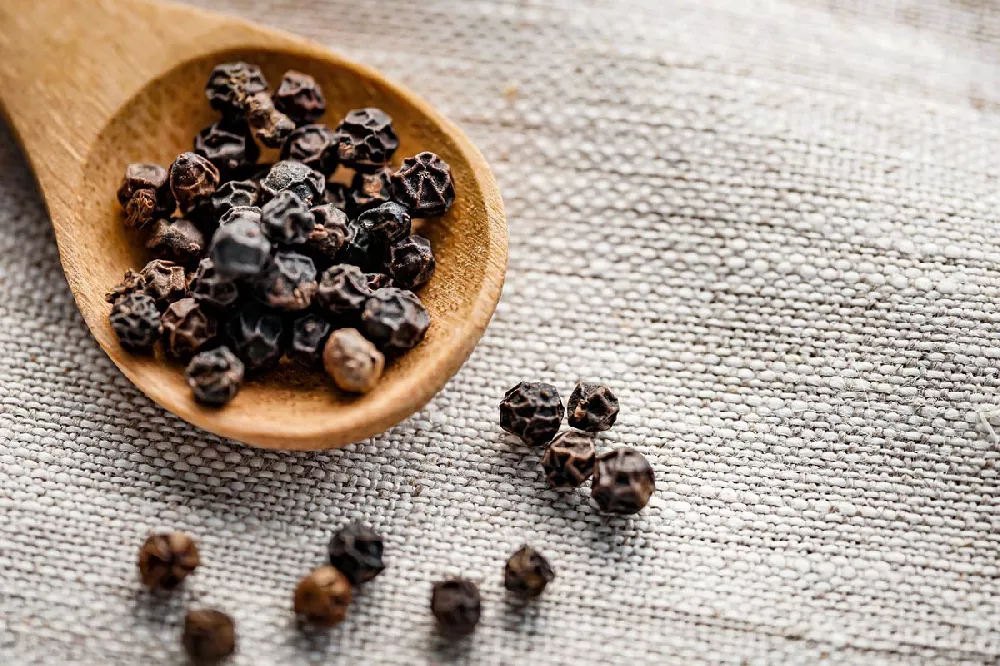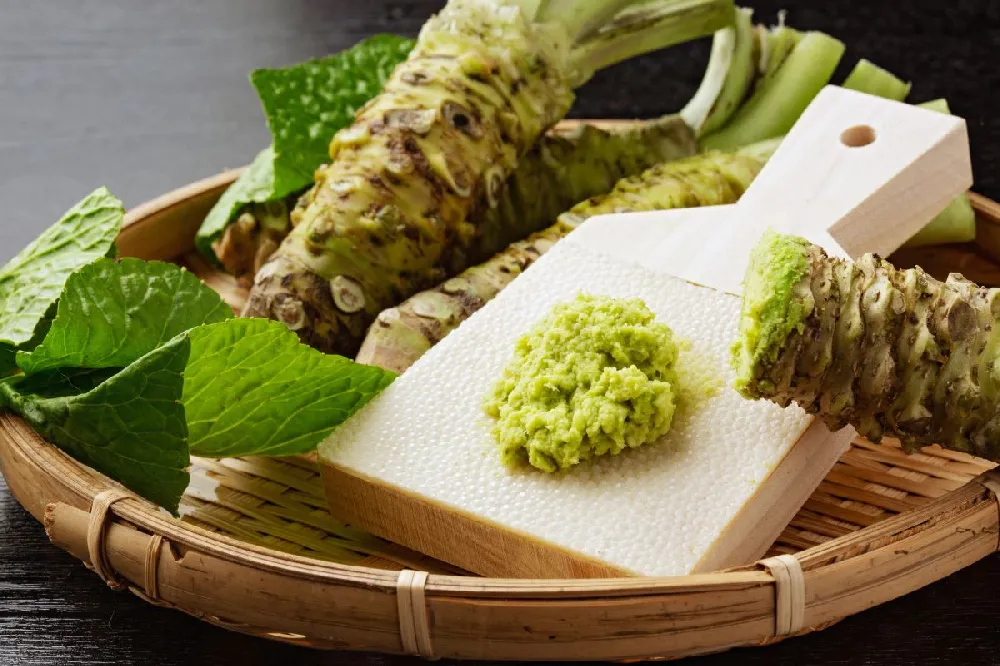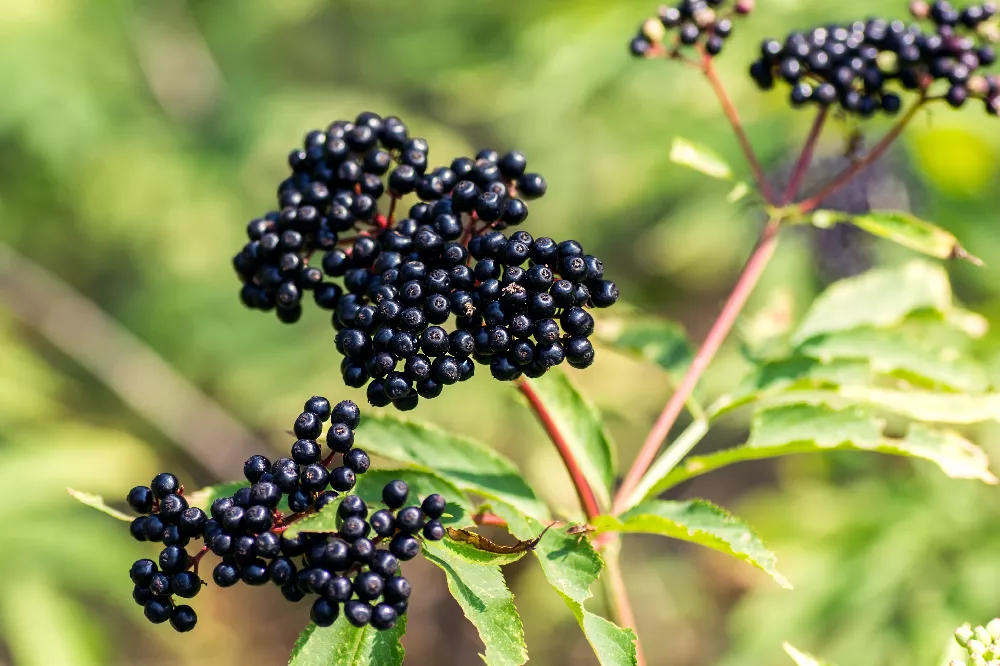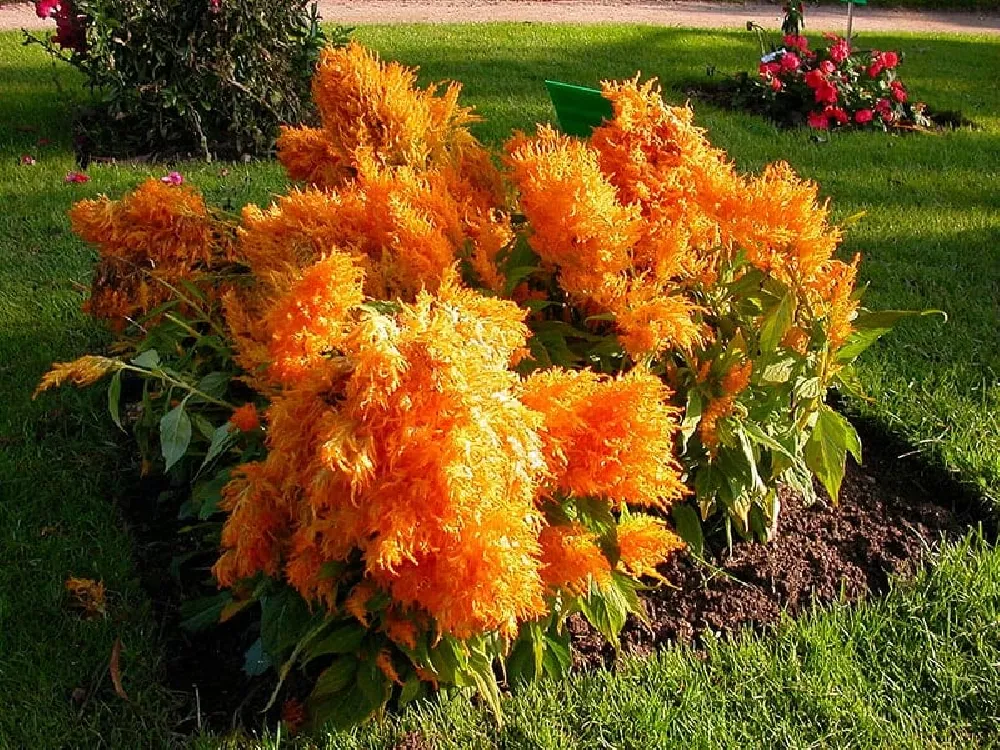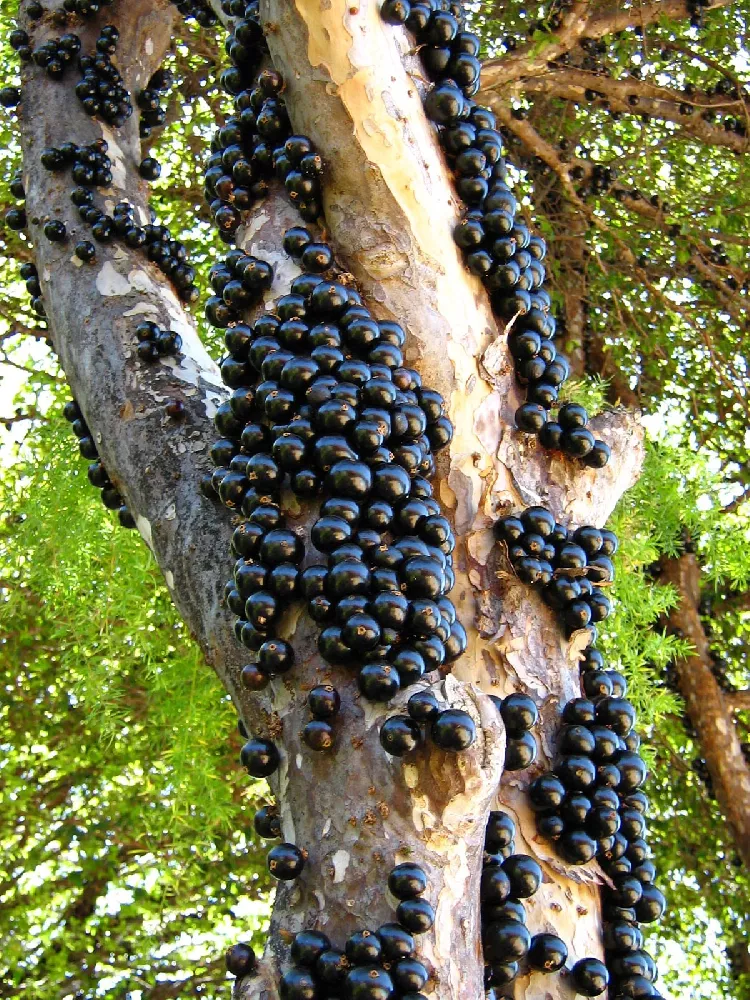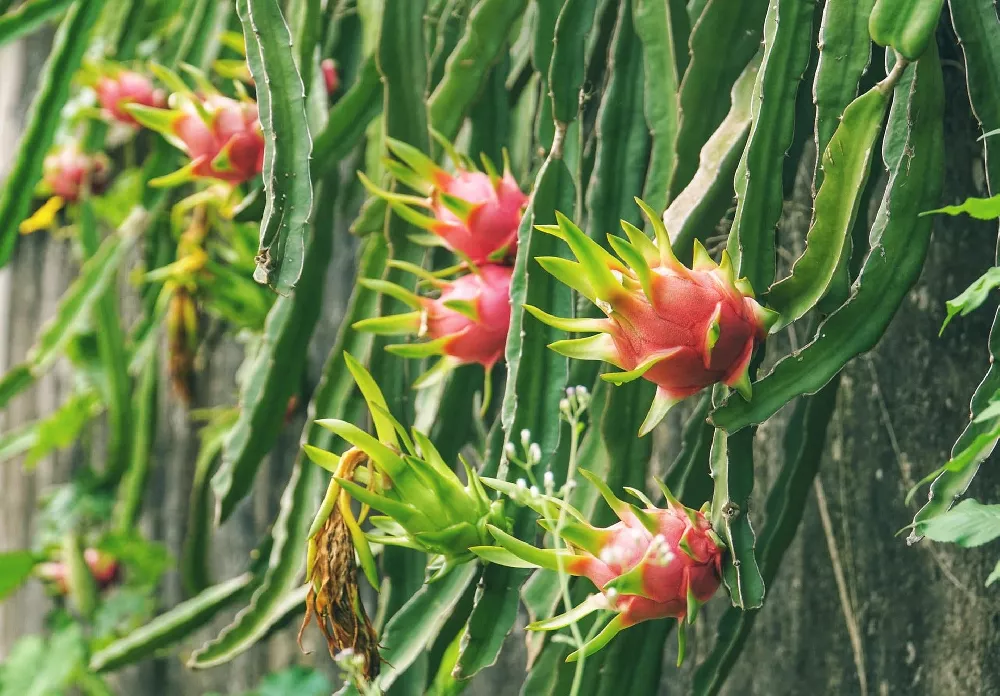Black Pepper Plant for Sale - Buying & Growing Guide
- Ships in 1-2 days
- 1-Year Warranty Eligible
- Pots or accessories are not included unless specified in the product options.
Shipping Details:
Once your order is shipped, you’ll receive an email with a tracking number and estimated delivery date. Most orders ship immediately, but some items are seasonal and may only ship in spring or fall. These products are noted on the website.
Many meals feel incomplete without the addition of black pepper. And if you want to stock your kitchen with this go-to seasoning, all you need to do is grow a black pepper plant in your garden. But the species known as Piper nigrum is not just valuable for the black pepper it produces. This plant is also quite attractive, as it develops a graceful climbing habit. The fruits are also lovely to look at — they take on a bright red color while they develop.
- This plant provides you with the black pepper popular in many dishes.
- It grows as a climbing vine.
- Its fruits have ornamental value with their bright red outer color.
Plant Care
Sunlight

The black pepper plant grows well in both full sunlight and in partial shade, depending on the growing location.
Watering
Fertilize monthly in spring and summer with a balanced fertilizer mix.
Fertilizing

Feed once per year with a balanced fertilizer or one with lower nitrogen.
Planting and Care
Planting instructions
Black pepper plants are climbing vines, so you’ll need to provide support for this plant in the form of a trellis or some other type of garden structure. This plant also needs to live where the weather is consistently warm. Nearly everyone living in the United States will need to grow this plant indoors for most or all of the year to keep it alive. Your black pepper plant will also need soil that can hold some moisture and plenty of daily sunlight.
Watering and nutrients
A black pepper plant enjoys consistent soil moisture, which means you should water your plant about once per week or once every other week during the growing season. A sure sign that your black pepper plant needs water is that the first layer of soil in which it grows has become dry. Fertilize this plant about once per month during the spring and summer with a balanced fertilizer mix. You can reduce both water and fertilization during the late fall and winter.
Pollination
Black pepper plants are self-pollinating; they hold both male and female reproductive parts on a single plant. This plant can rely on insects to move pollen from one flower to another. However, these plants also show an astounding ability to pollinate without the aid of insects, wind, or human intervention. In many cases, the pollen from one flower simply falls into another lower flower on the same plant. But while pollination can occur through these means, many gardeners choose to hand-pollinate their black pepper plants, especially when they grow indoors.
Pruning
One convenient aspect of the black pepper plant is that it will survive with minimal pruning or no pruning at all. But pruning can be beneficial in some cases. Mainly, you’ll want to use pruning cuts to remove diseased and damaged parts of the plant. You may also want to prune to control the size of your black pepper plant as this species can climb beyond its intended growing area. Regardless of your goal, make sure you always use a sterile pruning tool to keep your plant as healthy as can be.
Pests, diseases, and animals
Two of the most common diseases that a black pepper plant may experience are root rot and charcoal rot. Both of these problems will manifest themselves with visible symptoms, including discoloration and deformities to the leaves and stems. Anthracnose can also cause complications for black pepper plants, including yellow spots and cracking fruit. Pests like pepper lace bugs and mealybugs may also attack a black pepper plant. However, you can often get rid of these issues with an insecticide.
Harvesting
Black pepper plants produce clusters of small fruits that you can harvest multiple times per year. These fruits are green to begin with but will ripen to become bright red. Harvest when the fruits are fully red, then allow them to dry in the sun. Once the fruits have turned black and become relatively hard, they will be ready for you to use. Typically, you’ll want to grind these fruits before you add them to your food.
Achieving maximum results
Many gardeners who grow the black pepper plant underestimate how much warmth this plant needs. The black pepper plant will not survive in areas colder than zone 12, which is why you’ll likely need to grow it indoors. The indoor growing location you choose should remain above 70 degrees Fahrenheit during the day. Those who grow this plant should also be ready for ongoing harvests. The black pepper plant can flower and fruit continuously, which makes for many peppercorns for you to pick and eat.
FAQs
What's the difference between black, green, and white pepper?
Black, green, and white peppercorns can come from a single plant. The difference comes down to how you harvest them. If you pick a black pepper plant fruit before it transitions from green to red, you will have a green peppercorn. If you gather the fruits after they have reddened but remove the outer husk before drying, you will get white peppercorns.
Does black pepper have health benefits?
Black pepper is not only one of the most popular flavor enhancers in the world, but it may also have some health benefits. Mainly, some research suggests that black pepper can help improve sex hormone levels in men, leading to greater fertility. Black pepper may have additional physical benefits, including moderating blood sugar, lowering cholesterol and reducing inflammation reduction. For those reasons and more, growing a black pepper plant can be an excellent option for those hoping to improve their diets.
Where does the black pepper plant come from?
Black pepper is recognizable worldwide, but the plant that produces it is specific to certain parts of the world. Black pepper plants are native to southeast Asia. However, you can find them growing in many hotter parts of the world, including India and Brazil. Black pepper plants will survive wherever the weather is warm enough, and many people are able to grow them in their homes.
Compare Similar Products
You can't add more Product Name - Product size to the cart.
OK